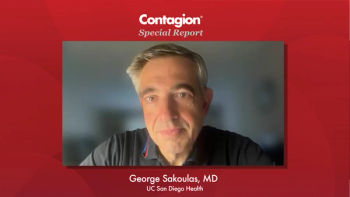
- June 2020
- Volume 5
- Issue 3
COVID-19 Preprints: Reader, Beware
In his June Editor-in-Chief letter, Dr. Jason Gallagher explores the influence of preprints amid the COVID-19 pandemic.
Coronavirus disease 2019 (COVID-19) is taxing us in so many ways. In some parts of the country, our health system has been pushed to the brink of capacity or beyond. Our economy has been decimated as a result of the widespread closures enacted to decrease the spread of the severe acute respiratory syndrome coronavirus 2 and prevent health-system collapse. Misinformation about COVID-19 has circulated farther and faster than the actual infection, confusing individuals and forcing health care practitioners to constantly counter myths being mentioned by patients, friends, and family. Finally, the flow of literature about COVID-19 has been unending, tiring those of us who look to it for guidance to improve patient outcomes. I want to focus on this last point for this month’s column.
The saga of 2020 will have many subtitles. One of them could be “The rise of the preprint.” Keeping up with newly available literature on COVID-19 feels like drinking from a firehose, except that only a percentage of the contents is actually clean water. Preprints have moved from a mostly unused venue for scientists to gather feedback on studies they are finalizing to a primary method for sharing “breaking data” as fast as possible. When these data are in the basic sciences and largely remain within a self-policing circle of scientists, they are probably fine. However, now there are millions of clinicians desperately looking for ways to more effectively treat patients with COVID-19. The media are reporting on unreviewed preprints that are often flawed, pushing catchy narratives that miss major points and the nuances that need emphasis. Reacting to preprints of clinical and translational science without critique is potentially dangerous. It is also understandable.
Many professional schools in the health sciences have curricula that include literature interpretation. We all know better than to “just read the abstract,” accept results at face value, or accept conclusions of papers without vetting the methods. Remaining steadfast to sound practice is much harder when we are constantly reacting to a continuous influx of new information. We are all looking for that golden paper that will help us improve our standard of care to something more satisfying than the largely watch-and-wait approach that we are stuck with now.
Peer review has flaws, but its absence has highlighted its utility. Ironically, it has become harder to find peer reviewers recently, as clinical scientists face long hours on busy clinical services. This column is a reminder that when you read a preprint, remember that you serve as your own reviewer and possibly the only reviewer that paper will see before you. In the past issue, I wrote about taking notes for the sake of posterity during the COVID-19 pandemic. Examining the influence of preprints should be one of them.
Be well and thank you for reading Contagion®.
Articles in this issue
over 5 years ago
COVID-19: A Primerover 5 years ago
How Close Are We to a Cure for HIV?over 5 years ago
Lefamulin: An Overview of a Lonely Soldierover 5 years ago
Improving Vaccine Uptake in a Cohort of Patients With Aspleniaover 5 years ago
The Future of Health Care After COVID-19Newsletter
Stay ahead of emerging infectious disease threats with expert insights and breaking research. Subscribe now to get updates delivered straight to your inbox.































































































































































































































































































